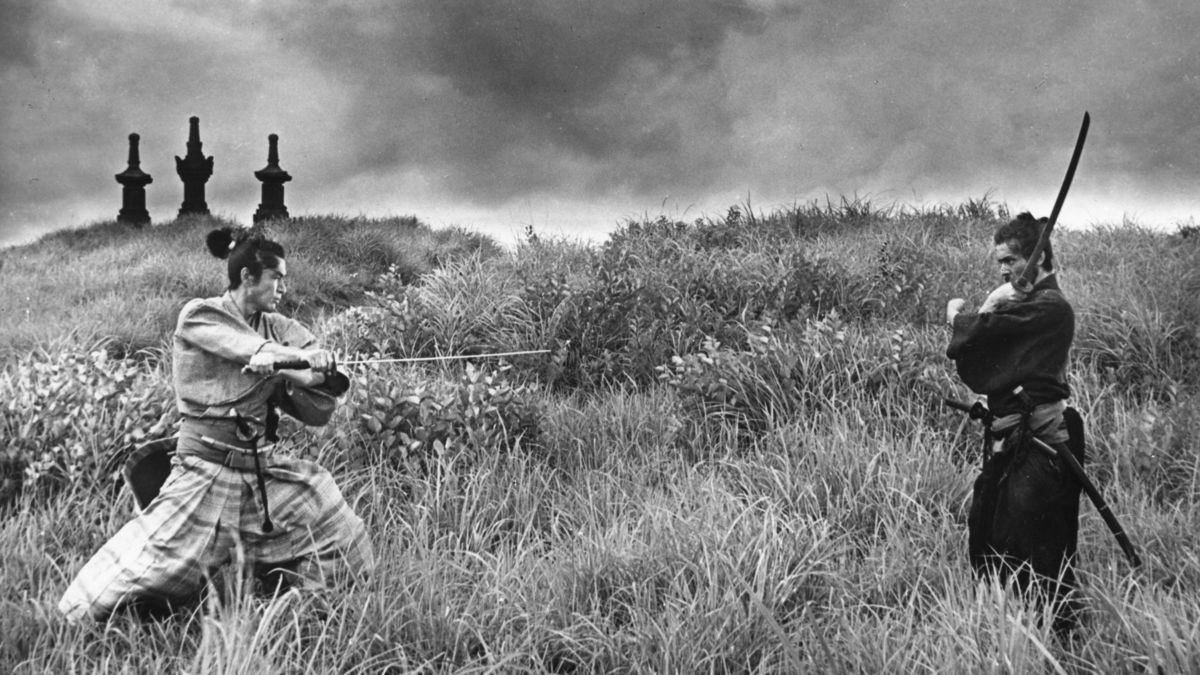In this section of our Colossus Movie Guide for Harakiri, we look at the key shots that help us understand the film.
Cast
- Tatsuya Nakadai – Tsugumo Hanshirō (津雲 半四郎)
- Rentarō Mikuni – Saitō Kageyu (斎藤 勘解由)
- Akira Ishihama – Chijiiwa Motome (千々岩 求女)
- Shima Iwashita – Tsugumo Miho (津雲 美保)
- Tetsurō Tamba – Omodaka Hikokuro (沢潟 彦九郎)
- Ichirō Nakatani – Yazaki Hayato (矢崎 隼人)
- Masao Mishima – Inaba Tango (稲葉 丹後)
- Kei Satō – Fukushima Masakatsu (福島 正勝)
- Yoshio Inaba – Chijiiwa Jinai (千々岩 陣内)
- Yoshiro Aoki – Kawabe Umenosuke (川辺 右馬介)
- Shinobu Hashimoto – Writer
- Masaki Kobayashi – Director
Key shots of Harakiri
The Forced Seppuku of Motome
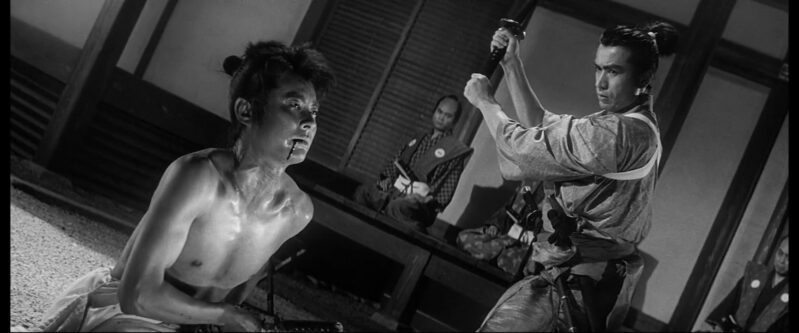
The shot of Motome’s forced seppuku is visually striking and emotionally resonant. Here, Motome, clad in a tattered kimono, sits in the center of the frame, hunched over with the bamboo sword in his trembling hands. The members of the Iyi clan surround him, standing rigidly in their pristine attire, a stark contrast to Motome’s ragged appearance. The camera frames this scene in a way that emphasizes the overwhelming isolation of Motome, surrounded by his uncaring oppressors, and underlines the stark disparity in power and status between him and the members of the Iyi clan. The composition of the shot amplifies the film’s exploration of systemic oppression, the rigid class hierarchy, and the dehumanizing consequences of a callous adherence to an unforgiving societal code. The aesthetic power of this shot is amplified by its horrifying implications, thereby contributing significantly to the film’s critique of rigid societal norms and the devastating cost of honor taken to cruel extremes.
The Reveal of the Topknots
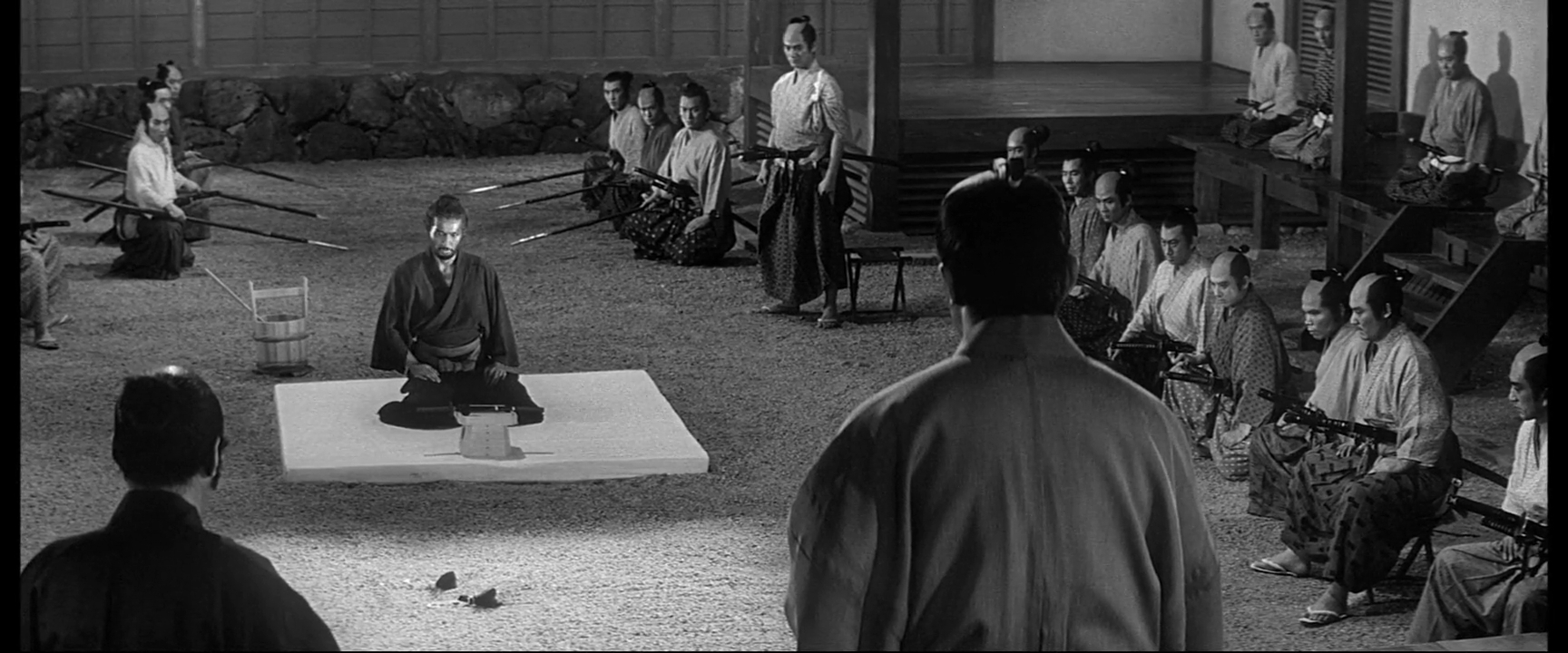
The shot where Hanshirō reveals the topknots in the courtyard is a visually powerful and significant scene. Here, Hanshirō stands as a solitary figure, enveloped in an austere atmosphere, with the severed topknots scattered around him. The placement of Hanshirō in the frame, towering over the fallen symbols of honor, underscores his role as a challenger of the societal order. The courtyard’s stark and open space serves as a stage for this powerful confrontation. The cinematic composition effectively highlights the themes of societal critique and individual defiance against oppressive power structures. The aesthetic appeal of this shot lies in its simplicity and its compelling symbolism, making it a memorable and significant image within the film’s narrative.
The Destruction of the Armor
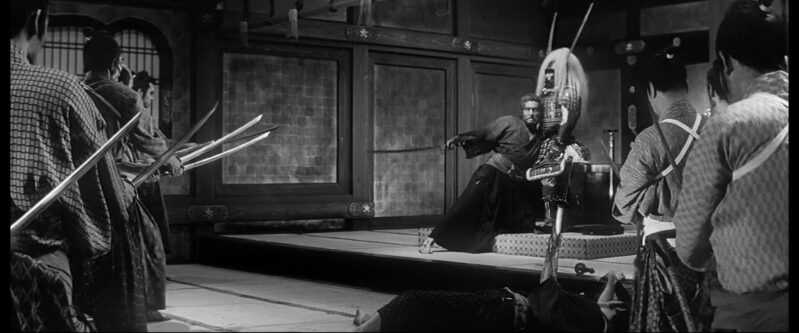
The shot of Hanshirō smashing the antique armor of the Iyi clan is one of the film’s most potent visual moments. The antique armor, up until this point, had stood as an unblemished symbol of the clan’s heritage and supposed honor. The moment when Hanshirō violently dismantles it is captured in a series of dynamic shots, underscoring his defiance and rage against the clan’s hollow ideals. The frame captures the shards of the once revered armor strewn across the courtyard, a visual testament to the shattered illusion of honor. The aesthetic appeal of this shot stems from its visceral energy and dramatic implications, making it a visually arresting and thematically resonant moment within the film’s narrative.
The Gunfire Execution of Hanshirō
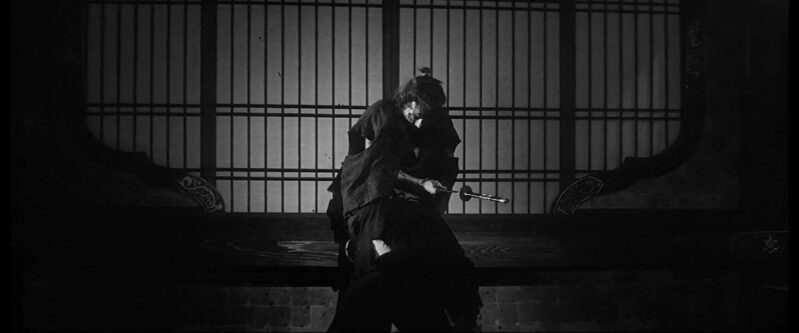
In a shocking twist to traditional samurai combat, Hanshirō is executed not by swords, but by matchlock guns. The shot where Hanshirō commits seppuku while being simultaneously fired upon is visually arresting. In the very room where Hanshirō smashed the armor that represented the Iyi clan’s honor, he kneels alone, framed in isolation, as the trio of gunmen point their smoking weapons at him from a distance. The ruthless, impersonal nature of his execution further illustrates the merciless rigidity of the system Hanshirō defied. The aesthetic value of this shot stems from its darkly contrasting elements: the dignified, solitary figure of Hanshirō against the impersonal, cruel firing squad. It’s a poignant visual encapsulation of an individual’s struggle against an oppressive societal system.
The Final Scrubbing of the Courtyard
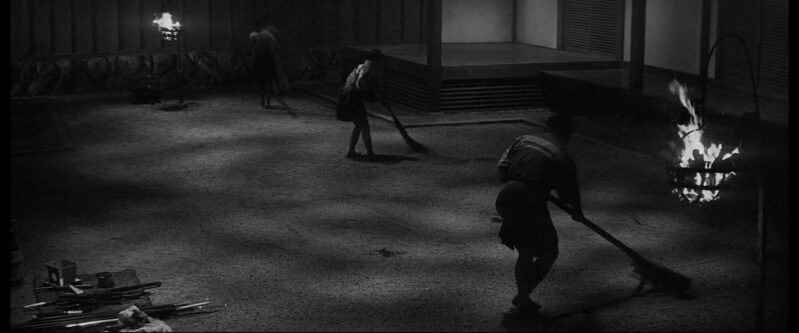
The final shot of the movie portrays a group of workers scrubbing the courtyard clean of the remnants of the confrontation, symbolizing the erasure of the truth and the reestablishment of order. Amid the sweeping motion of the workers, the discovery of a severed topknot that is then dropped in a cleaning bucket forms a visually compelling moment, serving as a silent reminder of the events the clan wishes to forget. The lingering shot captures the meticulous cleaning process, starkly contrasting with the violent clash that previously took place. The aesthetics of this final shot, marked by its subtlety and implicit symbolism, underline the film’s themes of societal manipulation of narratives and the resistance to change, rounding off the film’s critique on a powerful, contemplative note.
What are your thoughts?
Are there more shots you think should be part of the Colossus Movie Guide for Harakiri? Leave your thoughts below and we’ll consider adding them.

